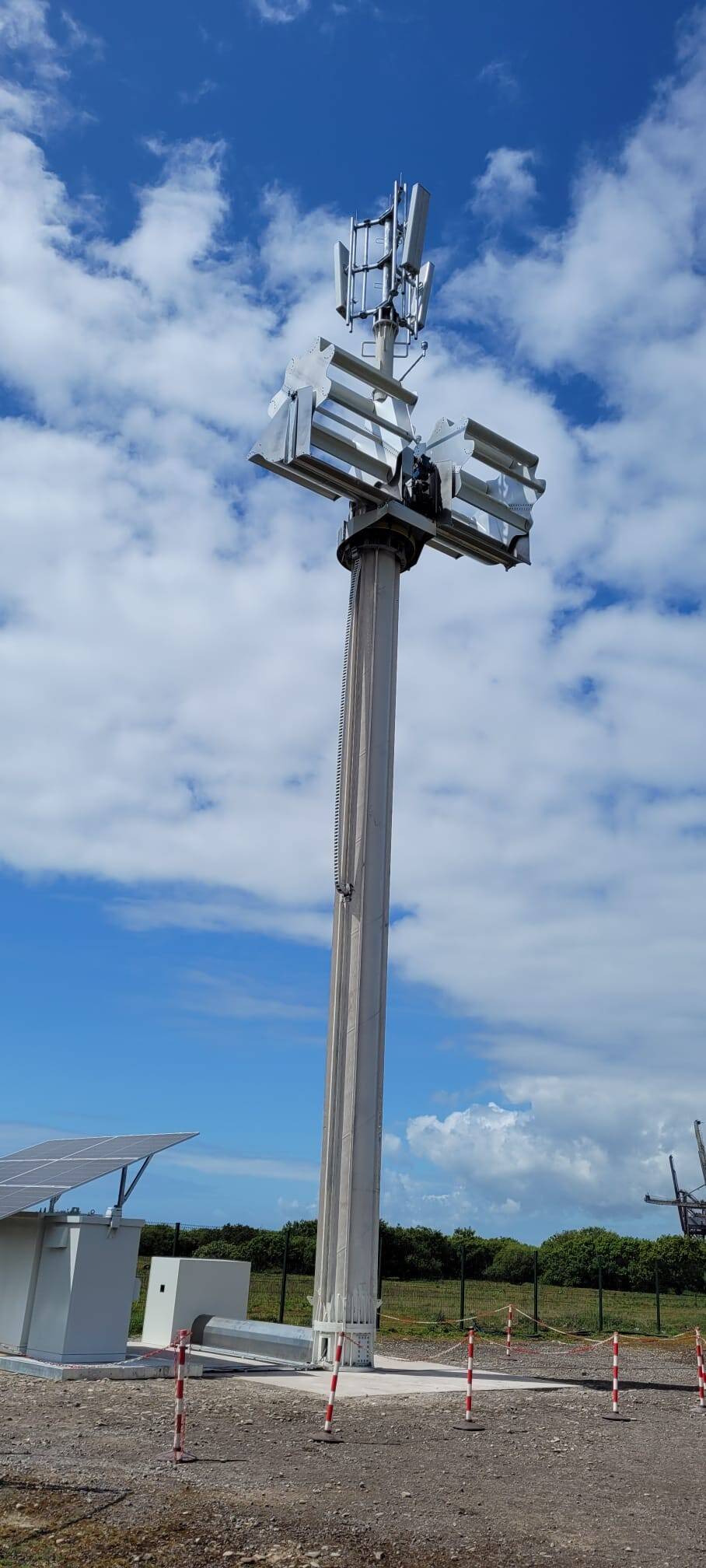You’ve reached your limit!
To continue enjoying Utility Week Innovate, brought to you in association with Utility Week Live or gain unlimited Utility Week site access choose the option that applies to you below:
Register to access Utility Week Innovate
- Get the latest insight on frontline business challenges
- Receive specialist sector newsletters to keep you informed
- Access our Utility Week Innovate content for free
- Join us in bringing collaborative innovation to life at Utility Week Live

Martin Barnes, CEO of renewable energy tech specialist Crossflow Energy, unpacks the off-grid, self-powered, mobile towers developed with Vodafone to target the UK’s ‘not spots’ and boost connectivity for isolated energy assets.
In June, Vodafone switched on its first wind and solar-powered mobile phone mast in Pembrokeshire, South Wales, to provide 4G coverage to the historic village of Eglwyswrw.
Alongside network partner Cornerstone, Vodafone is trialling what have been dubbed “self-powering masts” on rural mobile sites. Such towers not only support the company’s targets of achieving net zero for its UK operations by 2027, but could also help provide connectivity to the UK’s most remote and inaccessible locations – helping the industry achieve 95% of UK landmass coverage by 2025.
For the last two years, Vodafone and Crossflow Energy have combined the latter’s wind turbine technology with solar panels on the ground and battery technologies to create self-powering mobile network towers – which could remove the need for a connection to the national electricity grid and aim to provide connectivity for the UK’s “not-spots”, thereby boosting energy asset connectivity in more isolated areas.
 Crossflow has developed a transverse axis wind turbine to address what it sees as historical drawbacks of conventional ‘small wind’. Designed to generate up to 10KW, offer low rotational speed and minimal vibration, the turbine incorporates a patented shield which delivers optimum lift and drag performance across a range of wind speeds.
Crossflow has developed a transverse axis wind turbine to address what it sees as historical drawbacks of conventional ‘small wind’. Designed to generate up to 10KW, offer low rotational speed and minimal vibration, the turbine incorporates a patented shield which delivers optimum lift and drag performance across a range of wind speeds.
The design – which can be installed without the need to dig trenches and lay electricity cables – was created in collaboration with Swansea University through extensive computational fluid dynamics simulations before being validated by extensive wind tunnel testing.
The trial will run for two years with data gathered used to help Vodafone optimise the technology and determine which sites are most suitable for masts.
Potential of ‘small wind’
According to Crossflow Energy CEO Martin Barnes, the “self-powered” masts’ turbines are designed to address “historical drawbacks” of small wind. “Small wind historically has never reached its full potential for a whole host of reasons including performance, reliability, and planning concerns associated with noise, vibrations and ecology,” he said.
“We have deliberately manufactured a slow rotating turbine with an energy capture shield because this allows us to optimise performance over many wind speeds.”
Speaking to Utility Week Innovate, Barnes added that the “main challenge” of developing the masts has been adapting the transverse axis wind turbine technology to be deployed successfully within new sectors.
“In many cases this means focusing on the design of the turbine that already exists and adapting it to fit the situation,” he explained. “We spent a lot of time working with key stakeholders to overcome these concerns.
“All of our learning to date has come directly from the valuable insights of mobile network operators, tower companies and the build and maintenance contractors themselves,” Barnes added.
With the government’s recent Energy Security Strategy pledging a consultation on developing partnerships with a limited number of communities to host onshore wind farms in return for guaranteed lower energy bills, Barnes sees the potential to roll out small wind as “significant”.
“There are around five million communication towers across the world with significant expansion rates for supporting digital connectivity,” he said. “In most cases, they are located in areas of good wind and solar resource.”




Please login or Register to leave a comment.